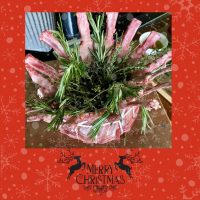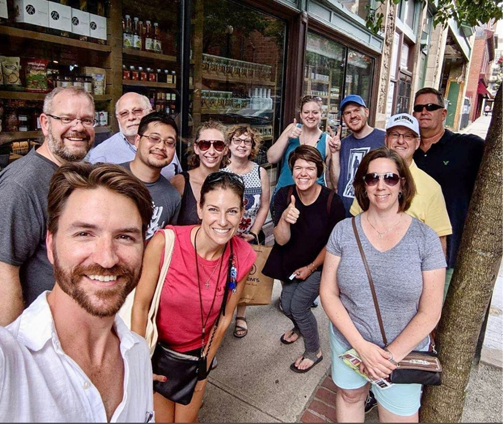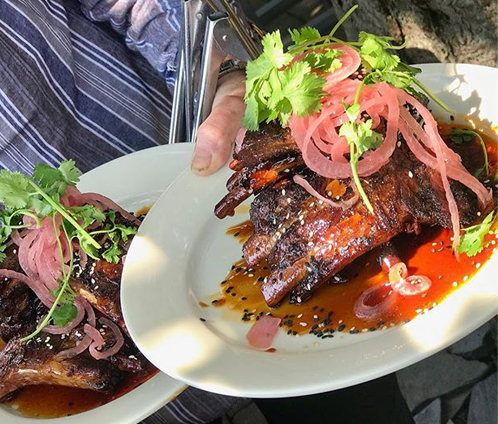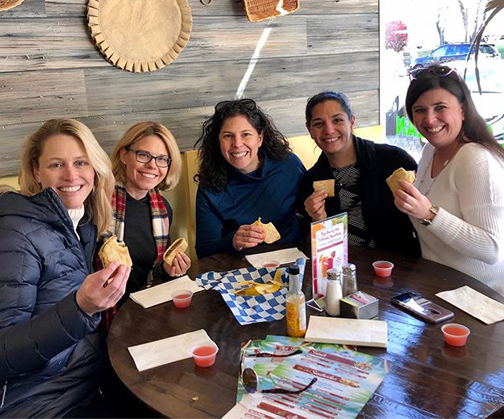Historic House Museums in Rhode Island
July 17, 2023
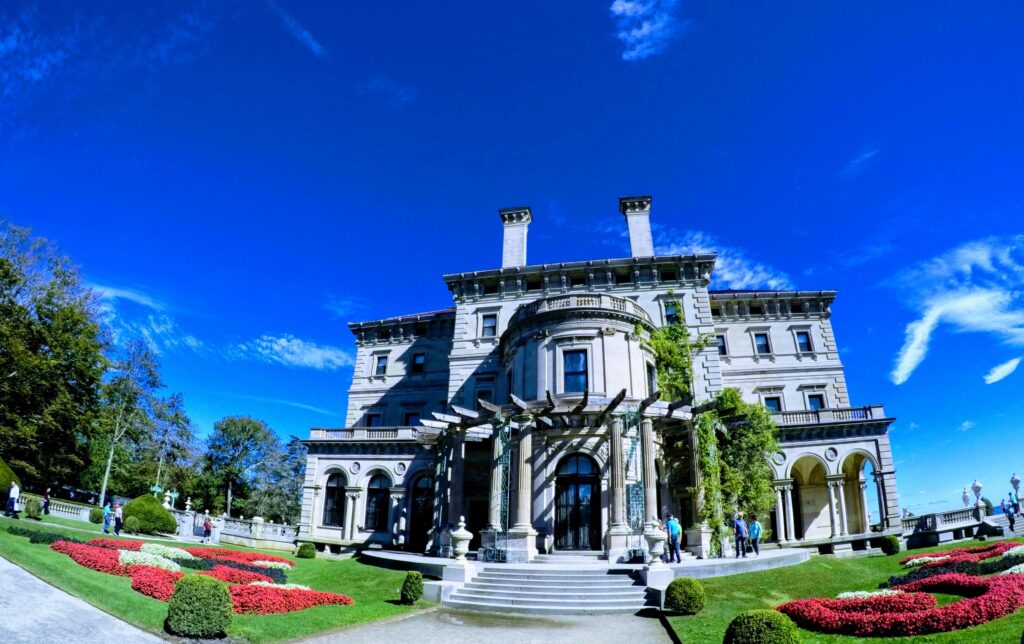
Despite being the country’s smallest state, the Ocean State holds a treasure trove of history within its borders offering a ton of things to do in Rhode Island, including many historic house museums. From its early colonial days to the Industrial Revolution, the state has played a significant role in shaping the nation’s history. Today, visitors can delve into the past by exploring the numerous historic house museums scattered across Rhode Island. These meticulously preserved and thoughtfully curated homes offer a unique glimpse into the lives and times of the people who shaped the state’s rich heritage. Join us as we embark on a journey through some of the most captivating historic house museums in the Ocean State.
The Breakers, Newport
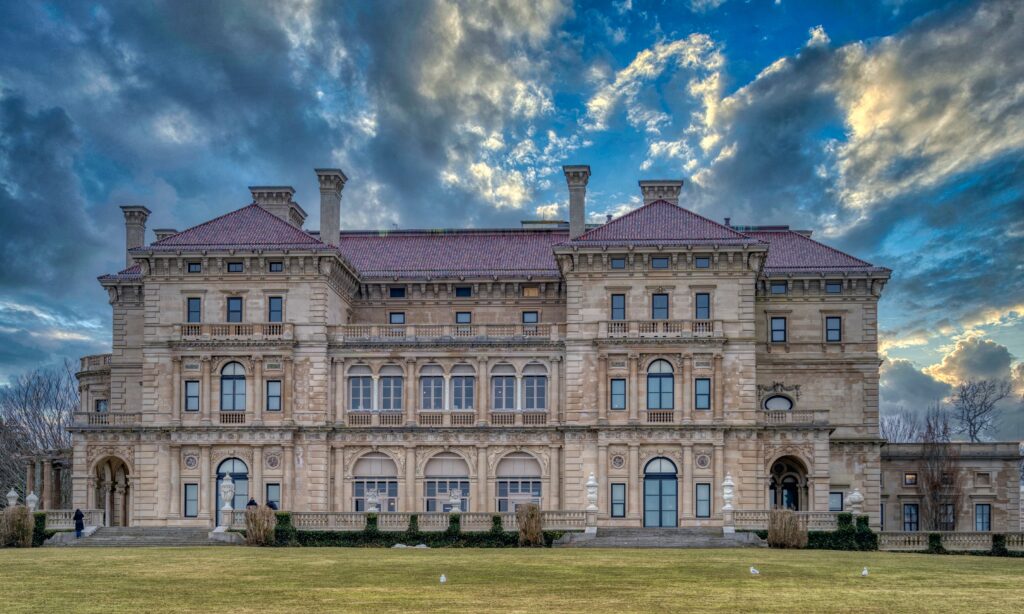
The grande dame of the Preservation Society of Newport County’s mansions, The Breakers was built in the late 19th century for the aristocratic Vanderbilt family, whose stunning Gilded Age ”summer cottage” is a testament to 19th century opulence and grandeur. With its awe-inspiring architecture, lavish interiors, and meticulously manicured gardens, The Breakers offers a glimpse into the luxurious lifestyle of the American elite during the turn of the century. Guided tours provide fascinating insights into the mansion’s history, the family’s legacy, and the architectural significance of this National Historic Landmark.
In addition to self-guided audio tours, The Breakers also offers a kid-friendly family audio tour where you’ll hear from family members and staff, as well as fanciful creatures like the friendly dolphin hiding under the grand staircase and the dragons in the dining room. Younger guests will experience a summer day in the life of one of the Vanderbilt children and learn about Monsieur Le Chef and his colleague, The Butler. There are many ticket options whether you want to see just The Breakers or if you’d also like to explore other Newport Mansions, including The Elms, Marble House, Kingscote, Isaac Bell House, Chepstow and Hunter House (c. 1748), considered one of the finest examples of Colonial architecture in Newport.
Much of the popular HBO series developed by Julian Fellows, The Gilded Age, starring actors Christine Baranski and Cynthia Nixon, was shot at The Breakers in addition to other Newport mansions. Stay tuned, season two returns this fall.
The Wanton-Lyman-Hazard House, Newport
As we delve deeper into Rhode Island’s past, we encounter the Wanton-Lyman-Hazard House in Newport. Dating back to 1697, this timber-framed house is the oldest surviving house in the city. Step inside, and you’ll be transported to colonial times, as you explore its period rooms and discover the stories of the families who called it home. The house also sheds light on Newport’s role as a thriving colonial port and its involvement in the slave trade. In fact, the Newport Historical Society, which owns the house now, has stated that in addition to the handful of families who lived there, so did a number of enslaved Africans including a woman named Cardardo Wanton, who is the likely original owner of an African spirit bundle found under the attic floorboards in 2006, where it is likely the enslaved residents of the house slept.
Rough Point, Newport
Best known as the summer residence of the late American heiress and philanthropist Doris Duke, Rough Point is a captivating historic estate with a storied legacy of a bygone era. Originally built for Frederick Vanderbilt, this enchanting property on tony Bellevue Avenue boasts breathtaking ocean views and a manicured secret garden. Inside the 39,000 square foot mansion, visitors can discover the eclectic collections of art, furniture and curious acquisitions from around the world that reflect Doris Duke’s eclectic tastes. Don’t miss the solarium overlooking Cliff Walk bridge and the sea, and save some time to snap a picture with the topiary camels on the front lawn.
Whitehall Museum House, Middletown
Surrounded by picturesque gardens and overlooking the Sakonnet River, Whitehall Museum House offers a serene and scenic setting, making it a must-visit destination for history enthusiasts and nature lovers alike. Three miles from the center of bustling Newport, Whitehall was the home of the great early modern philosopher George Berkeley from 1729-1731, and is set on the remnants of a seventeenth century farm. During his time there with his wife Anne, Whitehall became a meeting place for the intellectual minds of New England. Over the centuries, the home fell into disrepair but for more than 150 years, the farm served as an inn, a tavern, a tea house, and for most of the 19th century it was leased to a series of farmers. But the home was fully restored and Whitehall has been maintained by The National Society of The Colonial Dames of America in Rhode Island since 1899. Visitor information is available here.
The John Brown House Museum, Providence
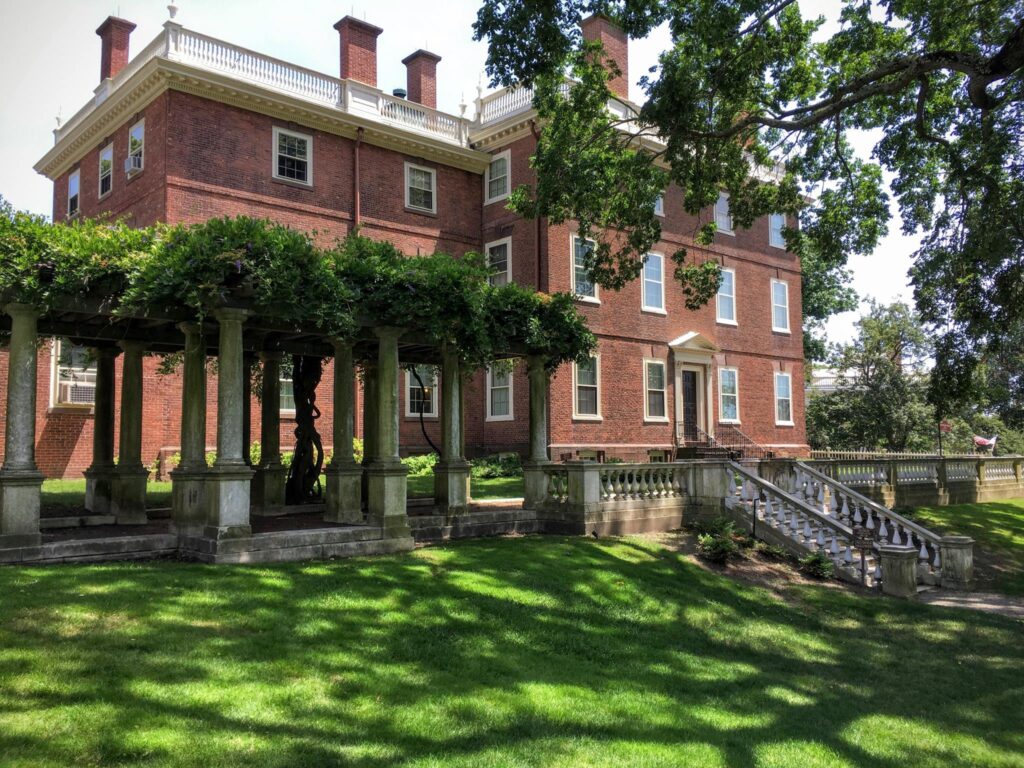
Next, we head to the John Brown House Museum in the Capital City. Constructed in 1788, this elegant Georgian-style mansion was the residence of John Brown, a prominent merchant, slave trader, and politician. Today, the house stands as a museum showcasing Rhode Island’s history during the Revolutionary era. Visitors can explore its beautifully restored rooms, period furnishings, sculpture, artwork, silver, porcelain, textiles and impressive collections of artifacts, a fully restored 18th-century carriage known as the “Washington’s Chariot” because President George Washington is said to have ridden in it while visiting Rhode Island, and historical documents including 18th-century wall maps depicting a very different worldview.
Operated by the Rhode Island Historical Society, the John Brown House Museum offers a captivating narrative of the state’s involvement in the struggle for independence and its complex relationship with the institution of slavery. How impressive is it? John Quincy Adams himself wrote in his diary that this house was “the most magnificent and elegant private mansion that I have ever seen on this continent.” Ticketing in advance is your best bet, and seasonal hours April 1 – Nov. 30 (winter: Dec. 1 – Mar. 3).
Lippitt House Museum, Providence
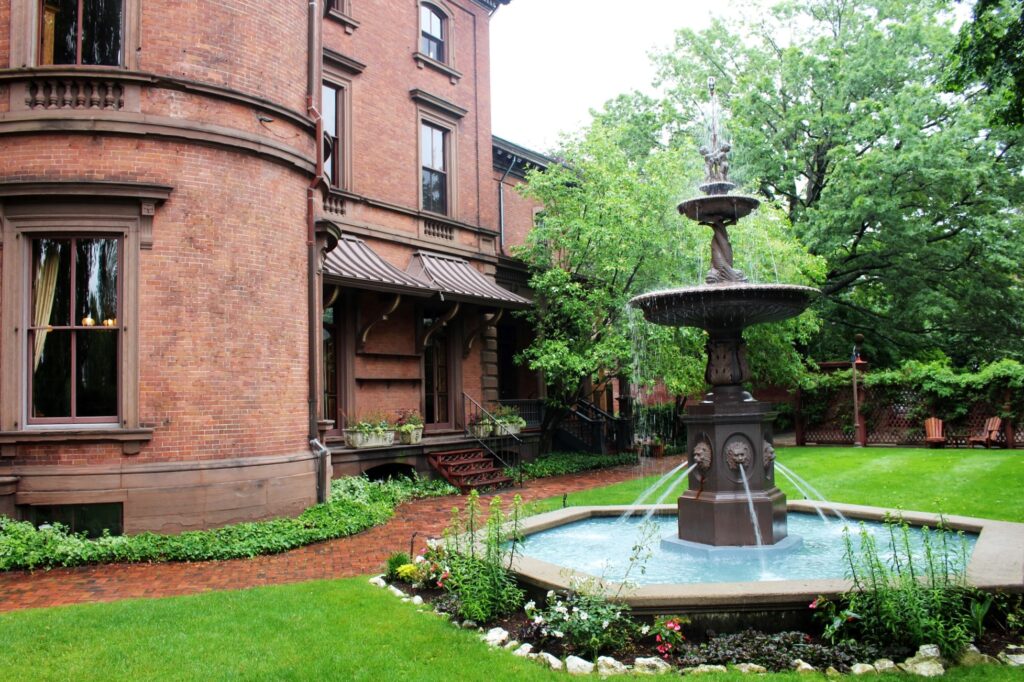
Continuing our journey, we make our way to Providence’s East Side, home of the Lippitt House Museum. Designed by renowned architect Thomas Tefft in 1865, this exquisite Victorian mansion showcases the opulent lifestyle of the Lippitt family, one of Rhode Island’s most influential political dynasties. A National Historic Landmark, the Lippitt House is known for having one of the best-preserved Victorian-era interiors in America. Admire the beautifully preserved interiors, ornate woodwork, and intricate detailing that exemplify the Gilded Age. The museum offers guided tours that provide insights into the family’s history, their contributions to Rhode Island, and the architectural significance of this home. Also, part of Lippitt House Museum’s mission is to encourage people to be civically engaged in their communities. But to visit, be sure to plan accordingly as the Lippitt House Museum is only open for public tours from May to October. Staff-led guided tours of the museum are offered by reservation on Fridays and select Saturdays.
The John Hunt House Museum, Rumford/East Providence
Established in a restored 18th-century colonial house built for Lt. John Hunt, Jr. (1720-1806) around 1750, the John Hunt House Museum in the Rumford section of East Providence is maintained by the East Providence Historical Society in partnership with the URI Master Gardener Program which tends to its surrounding gardens. A glimpse into colonial life to the American Revolution, the home includes a keeping room, borneing room, buttery, parlor and bedroom on the first floor, five bedrooms on the second and two rooms in the attic. There are three fireplaces on each of the first two floors, a fireplace with a beehive oven in the basement summer kitchen, and a smoke room in the attic.
When you visit, bring sturdy shoes and carve out a good amount of time to enjoy the 44 acre property which in addition to the museum, is home to an education and research center, walking trails, community gardens and a dog park.
The Gilbert Stuart Birthplace and Museum, North Kingston
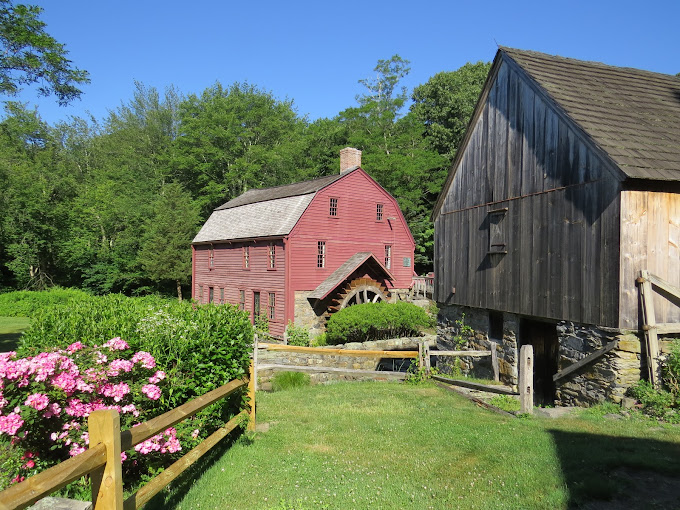
A short drive from both Providence and Newport brings us to the charming town of Saunderstown, where the Gilbert Stuart Birthplace and Museum stands as a tribute to one of America’s most celebrated portrait artists. Stuart, famous for painting the iconic portrait of George Washington in addition to other influential leaders, was born in this rustic 18th-century house perched on a beautiful millpond and stream. Explore the museum to learn about Stuart’s life, artistic career, and his enduring impact on American art. In addition to the authentically restored and furnished 1750 home, you’ll find a working gristmill, gardens, woodland trails, art exhibitions of Stuart’s famous portraits as well as a replica of his studio. The serene surroundings and informative displays provide a unique opportunity to delve into the world of a renowned artist. The museum is open seasonally from late April through Mid-October.
Linden Place, Bristol
Built in the heart of downtown Bristol in 1810, Linden Place stands as a testament to the elegance and grandeur of the Federal period in American history. Designed by renowned architect Russell Warren, it was the residence of the DeWolf and Colt families, influential in Rhode Island’s maritime industry and the American gun manufacturing business, respectively. However, the DeWolf fortune was primarily made from the transatlantic slave trade.
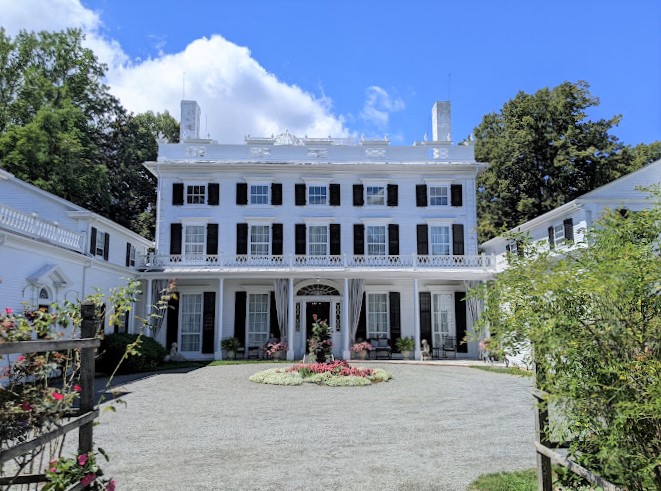
The mansion witnessed visits from notable guests, including President Ulysses S. Grant and Vice President Spiro Agnew. Today, Linden Place provides visitors with a captivating glimpse into the past.
Guided tours take visitors through the lavishly decorated rooms, showcasing period furnishings, artwork, and personal artifacts of the families who once resided there. The mansion is also known for its extensive gardens, adorned with vibrant flowers, lush lawns, and sculpture, offering a peaceful escape and providing a picturesque backdrop for special events and weddings.
Beyond its architectural splendor, Linden Place also serves as a cultural center for the community. The mansion hosts various educational programs, lectures, art exhibitions, and live performances, promoting an appreciation for history, arts, and culture. It plays an integral role in preserving Bristol’s heritage and fostering a sense of pride among residents and visitors alike.
Blithewold Mansion, Museum & Gardens, Bristol
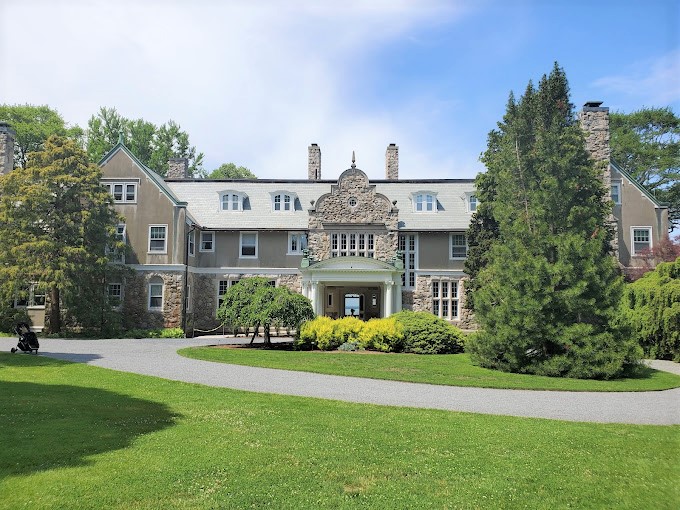
Nestled in the charming town of Bristol, Blithewold is a magnificent estate that showcases the beauty of nature and the splendor of early 20th-century design. This historic property, situated on 33 acres of rolling lawns, lush gardens, and scenic waterfront views, offers a tranquil retreat for visitors seeking a serene escape. Originally built in 1895 as a summer residence for the Van Wickle family, Blithewold’s architecture blends elements of English Country Manor and Colonial Revival styles, creating a unique and enchanting bayside aesthetic. Inside, visitors can explore the period furnished rooms, artwork, and elegant decor. One of the highlights of Blithewold is its breathtaking garden punctuated by a exceptional collection of rare and unusual plants, specimen trees, an accessible greenhouse, and whimsical stonework (including its iconic stone Moongate), which visitors can stroll through and explore.
The serene beauty and diversity of the gardens makes Blithewold a popular destination for nature enthusiasts, horticulturalists, and those seeking a peaceful respite. Blithewold offers guided tours and hosts various events throughout the year, including garden workshops, art exhibits, yoga, and concerts, including live music coin the sprawling lawn in the summertime.
Coggeshall Farm Museum, Bristol
Step back in time and experience the rustic beauty of early American farm life at Coggeshall Farm Museum. Nestled on 48 acres of pristine farmland, within the outskirts of beautiful Colt State Park, it offers an immersive journey into the past, inviting visitors to explore and appreciate the rich agricultural heritage of the region. As you stroll through the museum’s meticulously restored farm buildings, you’ll be transported to the late 18th century. Meet costumed interpreters who skillfully recreate the daily activities and traditions of a working tenant farm. From tending to livestock and cultivating crops to spinning wool and cooking over an open hearth, you’ll witness the authentic sights, sounds, and smells of early rural life. Visitors of all ages are encouraged to participate in hands-on activities that bring history to life. Try your hand at traditional crafts like candle making, woodworking, or lend a helping hand with seasonal farm chores. Kids can even dress up in period costumes and take part in interactive demonstrations, making for an unforgettable educational experience.
At the heart of Coggeshall Farm Museum is a deep commitment to preserving the region’s agricultural heritage. The museum showcases historic farm breeds and practices, contributing to the conservation of endangered livestock breeds. Their sustainable farming methods prioritize organic and responsible practices, highlighting the importance of environmental stewardship and the connection between the past and the present.
The Maxwell House, Warren
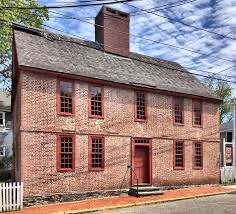
The Maxwell House is believed to be the oldest brick dwelling in Warren. This elegant house has become an integral part of the community and a beloved gathering place for locals and tourists alike. Constructed between 1752 and 1756, The Maxwell House stands as a testament to the architectural craftsmanship of the era, distinguished by the Flemish bond pattern of the brickwork, a fieldstone foundation, and a large central chimney. It has undergone careful preservation and restoration over the years to maintain its original charm and character.
Stepping inside The Maxwell House, you’ll find 10 rooms flanked by an attic and cellar, 6 fireplaces, 2 beehive bake ovens, an exposed beam kitchen ceiling and a later clapboard biffy in addition to period furnishings, antique pieces and family heirlooms that add to the authenticity and allure of the house. Throughout the year, The Maxwell House hosts a variety of garden parties and historical lectures, art exhibitions and musical performances. There is always something to engage and entertain guests of all ages. Whether you’re an architecture enthusiast, a history buff, or simply someone in search of a peaceful retreat, The Maxwell House offers a captivating experience that will leave a lasting impression of a bygone era.
The Wilbor House, Little Compton
“House” doesn’t give this compound credit as the Wilbor House property actually includes eight buildings of historical significance, six of which were part of the Wilbor farmstead–a complex that was used for farming between 1690, when the east end of the house was built, and 1955, when the property was acquired by the Little Compton Historical Society. Its well-preserved exterior features traditional clapboard siding and charming dormer windows. Inside, visitors can explore rooms that provide a glimpse into the lives of the early settlers. Learn about the lives of the Wilbors over six generations, 1690-1920, with a guided tour.
Smith’s Castle, North Kingstown
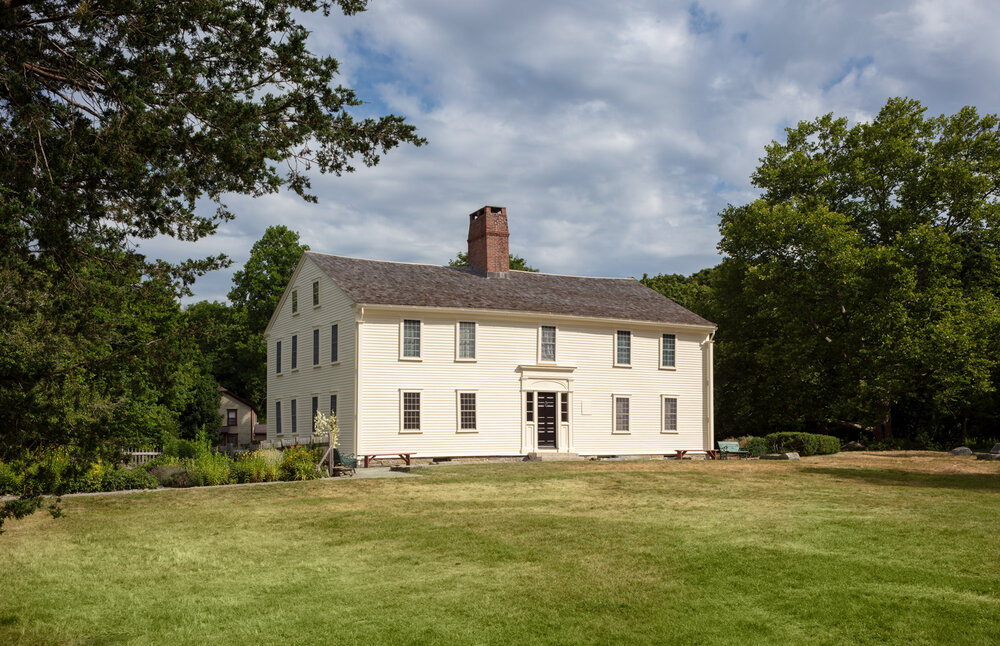
One of the oldest houses in the state, Smith’s Castle is a historic gem built in 1678 by Richard Smith, an English settler, with unique architecture that blends English and Dutch influences. The land on which the house sits was known as Cocumscussoc (or Cocumscossoc) and near the original site of Roger Williams’ trading post. A picturesque site overlooking the serene West Bay. Today, the site serves as a museum offering visitors a glimpse into the past through guided tours, educational programs, and events, like breakfast talks, evening lectures, and their very popular afternoon teas. Save some time to explore the nearby village of Wickford.
Hearthside House Museum, Lincoln
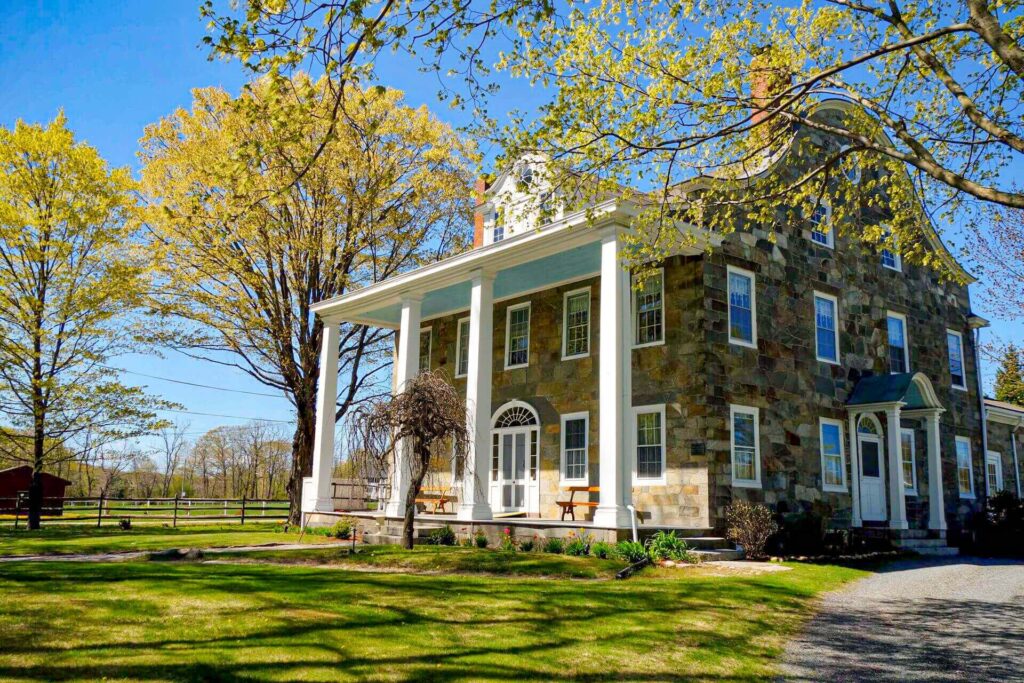
Appropriately named as Stephen Hopkins Smith built this Federal style house in 1810 of fieldstone and it contains 10 fireplaces or hearths, Hearthside is an award-winning historic house museum presenting a variety of historically-themed exhibits, events, and experiences. Over the years, Hearthside has become known as “The House That Love Built” because according to legend, Smith built this beautiful house to entice a young lady to marry him. For over 200 years, Hearthside served as a private residence, until its purchase in 1996 by the Town of Lincoln. Today, it’s a captivating historical treasure that provides a glimpse into the region’s rich past. This beautifully preserved Georgian-style mansion offers tours with guides dressed in period attire. Check the calendar here.
Sprague Mansion, Cranston
Built in 1790, the Governor William Sprague Mansion stands as a testament to the architectural beauty of the Federal style. The house was the birthplace of the governor and his nephew, Governor William Sprague IV, who fought in the First Battle of Bull Run during the Civil War while he was the sitting Governor. The family amassed its wealth as the founders of Sprague Print Works in 1808, which later became the Cranston Print Works – is the only continuously operating textile printing company in America. The 28 twenty-eight room, 2 1/2-story house is home to an impressive collection of art objects from the Far East, and outside, you’ll find a restored carriage house and stable with carriages, sleighs, pony carts. Tours are arranged by appointment.
Clouds Hill Museum, East Greenwich
Clouds Hill (formerly known as Cedar Hill) is a historic house museum in Warwick located on a country estate built 1871-77 as a wedding present for Elizabeth Ives Slater Reed by her father, William S. Slater. It offers the rare experience to get a sense of Rhode Island life in the late nineteenth century in a home that had never passed out of the original family’s stewardship. In fact, four generations of women have kept this home through the years. Today, it stands as an exceptional example of classic Victorian architecture. Tours can be arranged seven days a week but there are also special exhibits and events including around the holidays.
The Babcock–Smith House, Westerly
Built around 1734, the Babcock–Smith House was home to Dr. Joshua Babcock and is historically significant as he hosted both Benjamin Franklin and General George Washington here and it’s one of the state’s most interesting historic house museums. Perched atop atop the town’s well known Granite Street, one of the best ways to learn about the house, it’s surroundings, and the town’s history is via the Downtown Granite Tour, a reoccurring walking tour of the town’s significant granite buildings, monuments, and other often overlooked examples of the contributions of Westerly granite craftsmen. The town is one of the oldest and most widely known quarry districts in New England from which comes the stone commonly known as ‘Westerly Granite.’
Rhode Island’s historic house museums offer a captivating journey through time, allowing visitors to step back into different eras and gain a deeper appreciation for the state’s vibrant history. From the grandeur of Gilded Age mansions to the humble abodes of colonial settlers, each museum presents a distinct chapter in Rhode Island’s story.

